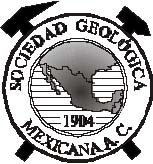|
BOLETÍN DE LA SOCIEDAD GEOLÓGICA MEXICANA, Vol. 55, n.. 1, 2002, p. 12-29 http://dx.doi.org/10.18268/BSGM2002v55n1a2 |
|
El sistema de fallas Taxco-San Miguel de Allende: Implicaciones en la deformación post-eocénica del centro de México
Susana Alicia Alaniz-Álvarez*, Angel Francisco Nieto-Samaniego, Ma. Teresa Orozco-Esquivel, Luis F. Vassallo, Shunshan Xu
Universidad Nacional Autónoma de México, Centro de Geociencias, Campus Juriquilla, 76230 Querétaro, Qro.
* This email address is being protected from spambots. You need JavaScript enabled to view it.
Abstract
The Taxco-San Miguel de Allende fault system (TSMAFS) is a major NNW-SSE structure, more than 500 km long and up to 35 km wide. It constitutes the boundary between crustal blocks that present different topographies and crustal thickness. From north to south, this structure crosses three geological provinces and from west to east it is the eastern edge of the Mesozoic volcano-sedimentary rocks. We studied in two regions the age, and kinematics of the TSMAFS, and its relationship with volcanism. It is shown that along the TSMAF, both, in the Mesa Central and in the Transmexican Volcanic belt, it is common to found the intersection of two or three normal fault systems, which were activated synchronously in all the deformation events recorded in the stratigraphy. With the software ReActiva, the potential of the fault reactivation for the last two events of deformation occurred in central México was estimated. In the Oligocene extensional event occurred mainly in the Mesa Central, faults belonging to the TSMAFS (N-S), San Luis de La Paz-Salinas Hidalgo and El Bajío (NW-SE), and the NE-SW fault systems were favourably oriented for reactivation. For the Quaternary extensional deformation in the Transmexican volcanic belt, the N-S faults belonging to the TSMAFS are unfavourable oriented for reactivation, nevertheless, it is known that some of them were activated during this event. It is concluded that the TSMAFS is a crustal weakness zone, and that kinematic interaction with other fault systems have controlled the resulting fault pattern during each event of Cenozoic deformation.


